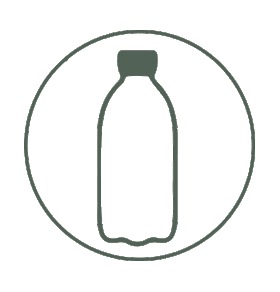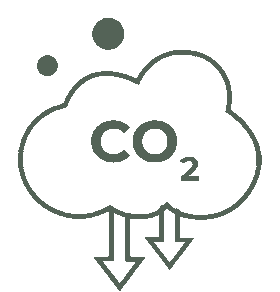Meet Chaitsi Ahuja, the visionary plantpreneur, at Brown Living. Discover the sustainable living insights that shape her world. Embrace a greener lifestyle with us!
This blog was written by Steena Joy and was originally posted on The Organic Magazine in September 2021.
A nature lover since childhood, Chaitsi Ahuja dabbled in marketing for a while till the pull of the Earth made her give it up altogether – her heart was just not into selling for the sake of selling, green washing consumers to the detriment of the environment. That’s when she started Brown Living in 2019.
Brown Living is an Indian e-commerce marketplace (aggregator) for all things sustainable. As an organisation, it curates products that are sustainable, natural, up-cycled, handmade, recycled, thrifted, earth-friendly and are an alternative to plastic products used in the home.
Chaitsi explains, “Our vision is to make sustainable living mainstream and not just limit it to a small segment of the population. After all, climate change is affecting all of us equally. Our vision and mission are aligned with the United Nations’ Sustainable Development Goals, specifically, Responsible Consumption & Production, Climate Action, Life Below Water, Life on Land.”

The journey was not without challenges. Finding the right partners/sellers (who are truly sustainable) and helping them make a switch to plastic-free packaging (including daily operations for packaging for courier) was not easy. “We created our own framework called the Brown Lens – It is a proprietary framework that is the basis of the product selection and curation process. The curation team uses the framework to identify the right products for a conscious customer, ask the right questions to creators, and evaluate a product in a holistic manner. The framework is created on the basis of Lifecycle impact, circular design principles, plastic footprint calculation, understanding source, materials used, packaging & its properties and overall aesthetics of the product,” she informs.

Another hurdle was changing consumer mindset – to opt for a product that is better for the environment, one which also reduces their waste, carbon footprint and plastic footprint. Over time, through various on-ground and online interactions with communities, Chaitsi found her own cohorts of consumers: who have a mindset to make a change. She says, “Our audience is age and gender agnostic. However, the common thread tying them all together is the idea of a better future (if they take action today). The intention for all these groups are different (some want to consume products that are good for their health and wellbeing, some choose it for a social currency, some of them are truly inspired and want to make more conscious lifestyle choices).”
Getting the right target audience for communications was also a challenge. There is no set demographic or psychographic parameter currently available to figure out who their consumer is. Chaitsi used market insights from her conversations with the community, and identified a few profiles that were more prone to making a switch. She targeted her campaigns to these audiences with tailor made communications to each cohort.

Embracing New: People who are making a shift in their lifestyle – moving to a new home or getting a new child in the family and are looking for natural/organic/chemical-free alternatives for the new life which can last longer or are more performance efficient and helps them save money.
Save the Planet: People who are aware about the larger problem of Climate Change and global warming and want to make small changes in their lifestyle. These are also people who understand zero waste practices, home composting and first make switches to reusables.
Social Currency: People who have heard about conscious living and think it’s cool to switch. These users usually also have the money to spend on high ticket items for social currency.
All Brown Living products are Made in India & Made for India, by women entrepreneurs, artisans and marginalised communities – as Chaitsi wants to promote a self-sustaining economy where innovation is created at home (indigenous technology & craft put to use for low impact consumption).
Recently, environmentalist and film producer Pragya Kapoor announces her association with Brown Living – sustainable and plastic-free online marketplace. Pragya has come on-board as a partner & investor with Brown Living, as she is a firm believer of green practices & also actively works as an environmentalist with her NGO: ‘Ek Saath – The Earth Foundation’. “EK Saath” works towards making the country more sustainable & conscious by undertaking initiatives such as waste collection, sanitation, beach restoration. Her association with Brown Living resonates with her personal values and is yet another feather in her cap.

The brand’s seller network has grown to over 200+ brands, 4,000+ products spread across categories such as Fashion, Home & Living, Home Utilities, Stationary, Travel Accessories, Skincare & Grooming. “We have planted 1500+ trees for our efforts in negating our carbon emission as a business from the proceeds of our sales and in turn, created jobs for 180 people in rural India who work on these plantations, and trained them to be self-sufficient and entrepreneurial,” adds Chaitsi.
As for Vendor Selection & Onboarding, Brown Living requests each seller to send us product samples. The team personally tests them by use, evaluates their packaging (for product and shipping), verifies their licenses & certifications and the approves for listing. Products that don’t stand true to the framework are dropped.
Are they eco certified?
Not all Brown Living products are eco-certified but the brand does verify relevant tests related to the products’ environmental impact. “While certification does help in convincing consumers, they are not the only aspect for a customer’s decision making process. There are a lot of other factors that come into play – the brand values, sourcing and people practices, mission and vision, aesthetics and the product’s usability as well (we have covered these under The Brown Lens as well),” is Chaitsi’s opinion.
The eco-friendly/green industry especially in India has been largely unorganised. With the advent of e-commerce regulations and sales by D2C brands, it has become increasingly i mportant for individual brands to be TRANSPARENT, source from the right suppliers and acquire certifications relevant to the category. However, it is a costly affair and businesses which are operating at a small scale have, needless to say, a limited amount of funding /resources/support from a consumer base at this point.

Chaitsi adds, “Also, since the certifications do not have a direct link to revenue for these brands, it sometimes takes a back seat (to prevent the company from going into losses). This is also one of the major reasons for certified brands being more “Expensive” as compared to others as it all costs money! A very interesting segment that has come up in the last few years, due to this challenge is to do contract manufacturing from the few suppliers who already have the right certifications required. A large part of the businesses that work in this space practise this and buy from these suppliers in smaller batches to keep their costs and operation capability in control. We do engage with brands who do contract manufacturing from these suppliers.”
Brown Living only services India at the moment and Chaitsi wants to keep it that way, to avoid a high environmental footprint and promote Indian products to Indians.
Outlining her future plans, she says, “We want to be a household name in sustainable living, help consumers at every step of their waste minimising journey. I strongly believe that sustainable living is not a niche and should not be restricted to a select segment of our population and we are doing everything in our capacity to make sustainable living affordable, accessible and easy. It’s ambitious but not impossible.”
Chaitsi has seen consumers demand for more transparency, drive action by taking initiative and reaching out to us with ideas and curious questions about processes, people behind the brand.
“It is important for all platforms, not just us, to be able to understand the product/service first before promoting it. Also, it’s the only way forward for a sustainable product to become more affordable – through scale. We want to achieve scale by ramping up our efforts in verifying the authenticity for the consumers. So, especially in this case, certifications help take care of some of the basic parameters to build trust. Sustainable consumption is not just about changing behaviour but also about a shift in mindset,” she says.
What role can the government play?
Chaitsi honestly appreciates all those who are voicing their opinions to demand a change in the way our policy and laws operate WRT the environment – but she feels that there is need for more backing and support.
“It’s a world crisis and we all must do everything in our power to make a change. Whether it is to help communities like Fridays for Future and Climate activists or to make small switches in our lifestyle. Additionally, there are a lot of confusing theories around sustainability practices and that’s a major part of the awareness that we need to bring about. The government did introduce a ban on single use plastics a few years ago but each policy is as good as its implementation. We are yet to see a widespread impact and execution on ground for the same,” she observes.
She laments that, when FMCG giants are allowed to create more waste, there isn’t much a consumer can do when the governing bodies allow it. “For any drastic change to be made in India, we need strict regulations, even if it means a bottling company needs to be shut down to prove a point. A lot of cities internationally (example Paris), and cities in India have launched free drinking water for the citizens (Orissa becomes first state in India to implement direct clean drinking water from the tap in Puri) – I suppose this is a step in the right direction in truly reducing plastic waste,” she adds.
Bring back the old ‘jugaad’
A large part of urban audiences with higher disposable incomes have gotten used to the “convenience” of urban packaged goods. This has made it increasingly difficult and almost inaccessible for them to switch to a low waste lifestyle. Chaitsi agrees, “It’s about time that we bring back some of our old ways and reduce our waste as individuals. Especially in the post-Covid world, there is already so much single use hygiene products that is/will not even get recycled, puts a lot of pressure on the already polluted waste management systems we have. A lot of sustainable living comes from “Jugaad” that our grandparents used to practice and its about time it’s back for good.”
To be honest, we have always lived an eco-friendly and zero waste lifestyle. Ayurvedic practices, home remedies, composting has all been part of our culture for decades. “We just need to reinvent old ways to make them relevant to our current lifestyles. And that awareness is already there and the shift is happening very quickly (since the past 2-3 years). With or without Covid, there are a fair amount of consumers who have been practising these in their homes for generations and have a great understanding of how to live zero waste. We need to make those practices mainstream,” sums up Chaitsi.





